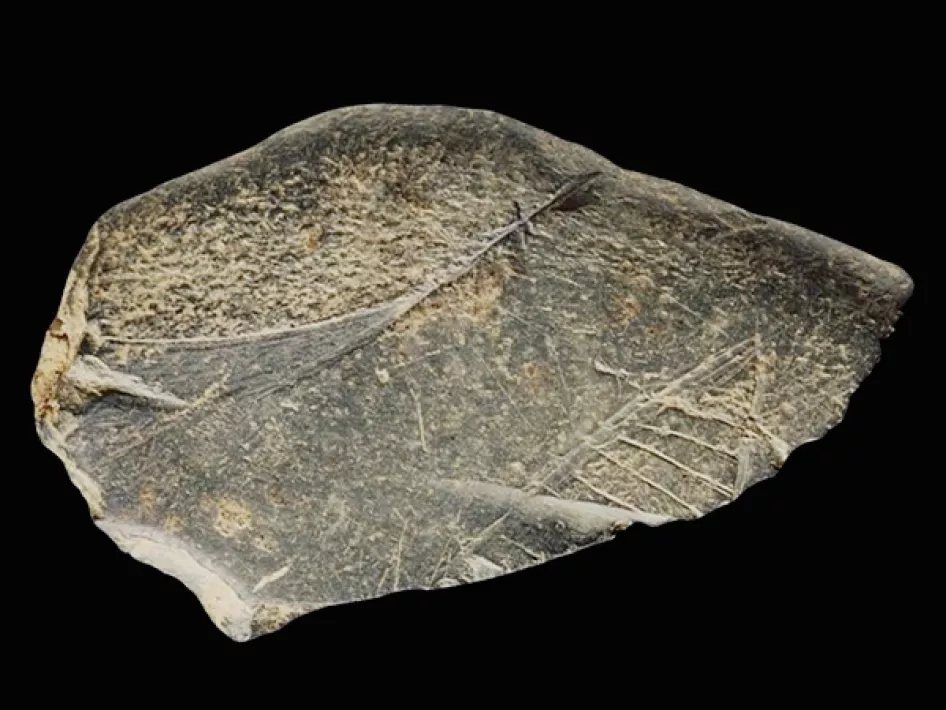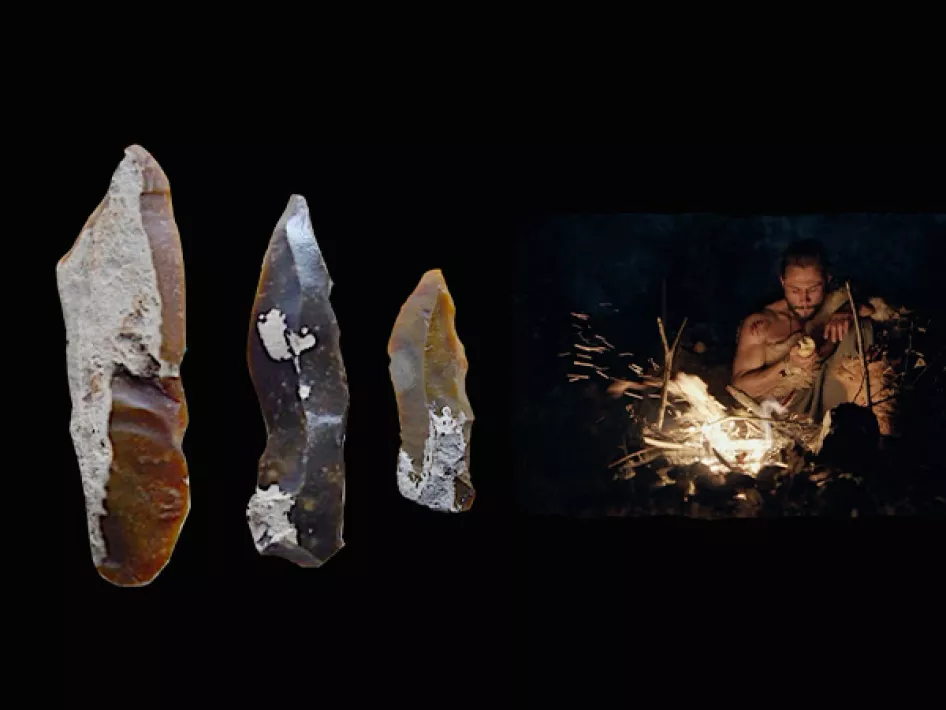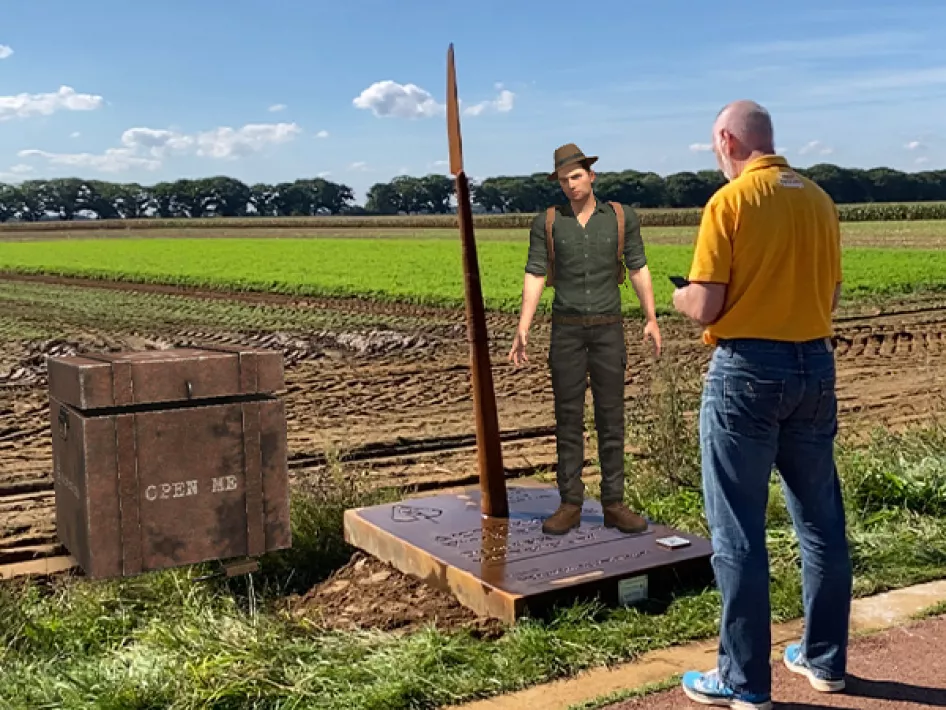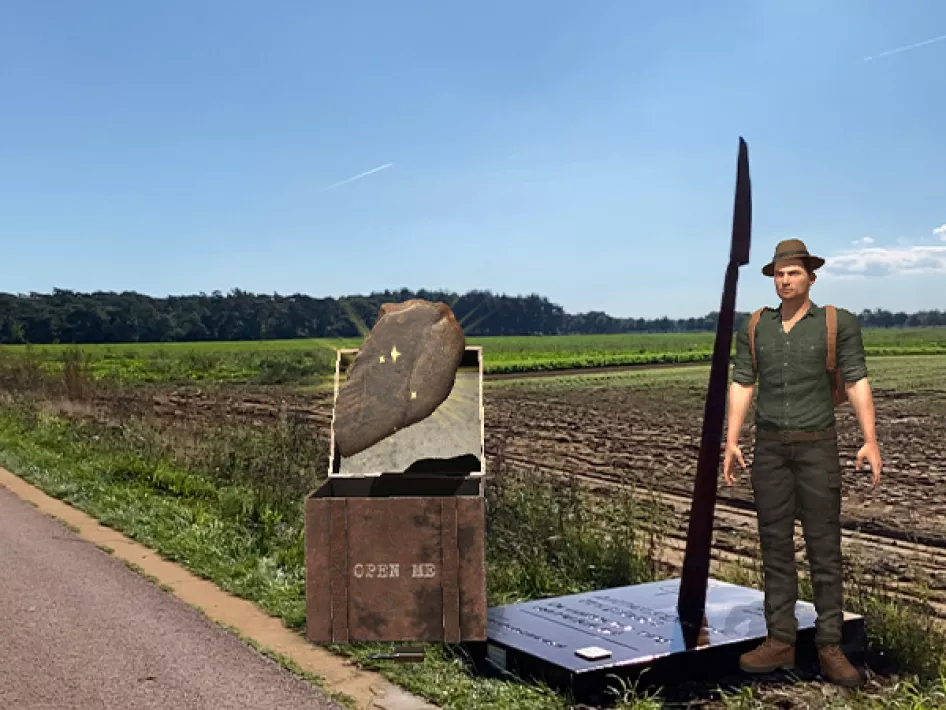The place you’re standing is remarkable. Below your feet lies a valley carved by the meandering Rur in the last Ice Age. That it has survived is something of a miracle. It seems that an earthquake may have shifted the riverbed, moving the Rur further north, so that the river was never able to sweep its old valley clean. Some 12,000 years ago, water flowed through these gullies while today’s high ground was once the riverbank where hunter-gatherers camped.
One of those camps has been excavated and in addition to the usual finds, archaeologists discovered a spectacular item: a small quartzite stone. It was used as a retoucher: a tool with which to make flint implements. There’s a drawing scratched onto the stone. It seems to be a tent or a wigwam. This is the oldest depiction ever found in the Netherlands. While the original is at the Rijksmuseum of Antiquities in Leiden, an excellent replica of the stone is on show at Roerstreek Museum in St Odiliënberg.
NOTE: The location of the spear is near the junction of the Kleiner Bergerweg road with the Linnerveld road.



